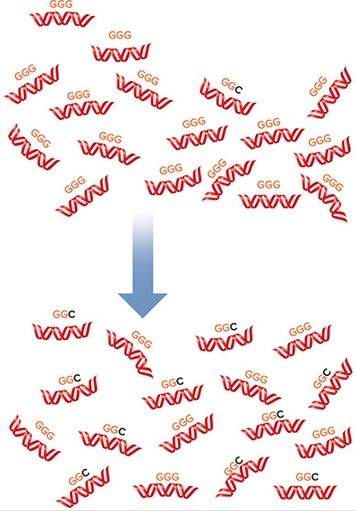GGG and GGC are codons for the amino acid, glycine. A mutation caused the insertion of a cytosine in place of the guanine during DNA replication. Over many generations the DNA changes so that the frequency of GGC is similar to that of GGG. What effect does this mutation have on the population's mean fitness?
A. As the frequency of the GGC codon increases, the population's mean fitness level will initially increase, but once GGC and GGG occur with equal frequency, the mean fitness will decrease.
B. As the frequency of the GGC codon increases, the population's mean fitness level will remain the same.
C. As the frequency of the GGC codon increases, the population's mean fitness level will decrease.
D. As the frequency of the GGC codon increases, the population's mean fitness level will increase.
Answer: B
You might also like to view...
Why do many plants use the photoperiodic pathway to regulate the timing of flower formation?
A. Flower petals carry out high levels of photosynthesis and require high light conditions. B. A minimum amount of light is always necessary for flowering. C. This allows plants to link flowering to temperature, which corresponds to the season when conditions are optimal. D. This allows plants to link flowering to day length, which corresponds to the season when conditions are optimal.
The vast majority of proteins expressed early in an animal's development
a. are translated from preexisting mRNAs present in the unfertilized egg. b. are translated from preexisting mRNAs delivered by the sperm that fertilized an egg. c. are translated from mRNAs that were transcribed from the zygote's DNA in the first three rounds of cell division. d. are transcribed and translated from the unfertilized egg's DNA postfertilization. e. were present as inactive proteins in the unfertilized egg.
James Watson and Francis Crick
a. established the double-stranded nature of DNA. b. established the principle of base pairing. c. explained how DNA's structure permitted it to be replicated. d. proposed the concept of the single-helix. e. discovered genes.
The red panda, a fox-like animal, once was classified as a type of bear, based on morphological characteristics. Which of the following statements is a reasonable deduction based on this phylogenetic classification of the red panda?
a. It means red pandas look like panda bears. b. It means that DNA sequencing was used originally, but morphological evidence later showed otherwise. c. It means that red pandas shared a recent common ancestor, or node, with foxes. d. It means that red pandas are more closely related to raccoons than bears. e. It shows that phylogenies are hypothetical, subject to revision and modification.